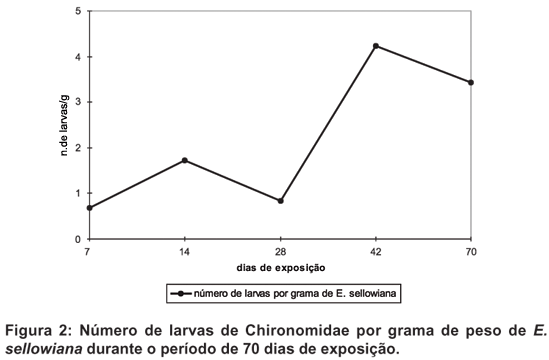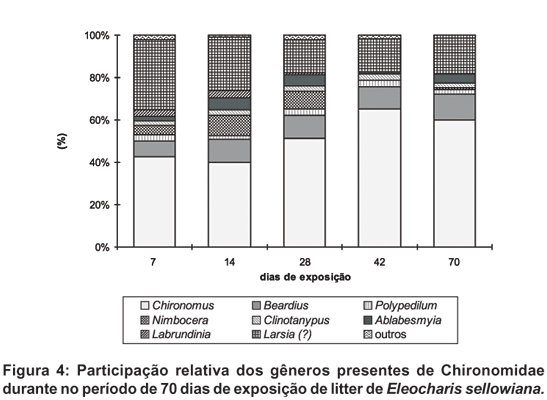The colonization process by macroinvertebrates of litter of Eleocharis sellowiana (Cyperaceae), the dominant macrophyte in the Itaipuaçú marsh, Maricá, Rio de Janeiro State, was studied. An experiment was carried out in the period from April to June, 1996. Twenty five samples of same weight (50 g) of leaves were deposited and 5 series of 5 samples were collected in a period of 70 days. Insects represented 51% of the macroinvertebrates and among them Chironomidae (Diptera) was the most important taxon with 58% (2347 individuals). Among Chironomidae, Chironomini (Chironominae) constituted the most abundant group with 63.1%, followed by Tanypodinae with 34.3%. Tanytarsini (Chironominae) had reduced participation (2.6%). The genera encoutered were Chironomus, Polypedilum, Beardius (Chironomini), Tanytarsus (Tanytarsini), Clinotanypus, Ablabesmyia, Labrundinia, and Larsia (?) (Tanypodinae). Chironomus was the most important group with more than 50% of the total of chironomids sampled, followed by Larsia (?) with approximately 25%. Chironomini, especially Beardius and Chironomus, presented growing abundance up to 42 days of exposition, having a small retreat at the end of the experiment. The same growth happened with Tanypodinae, reaching a stabilization after 42 days. Tanytarsini (Tanytarsus sp.) became only significant at the end of the experiment. The relationships between the occupation of chironomid larvae, the decomposition process of E. sellowiana, the concentration of periphytic algae, and the hydrologic regime of the waterbody are discussed.
Chironomidae; larvae; colonization; macrophytes; marshes






